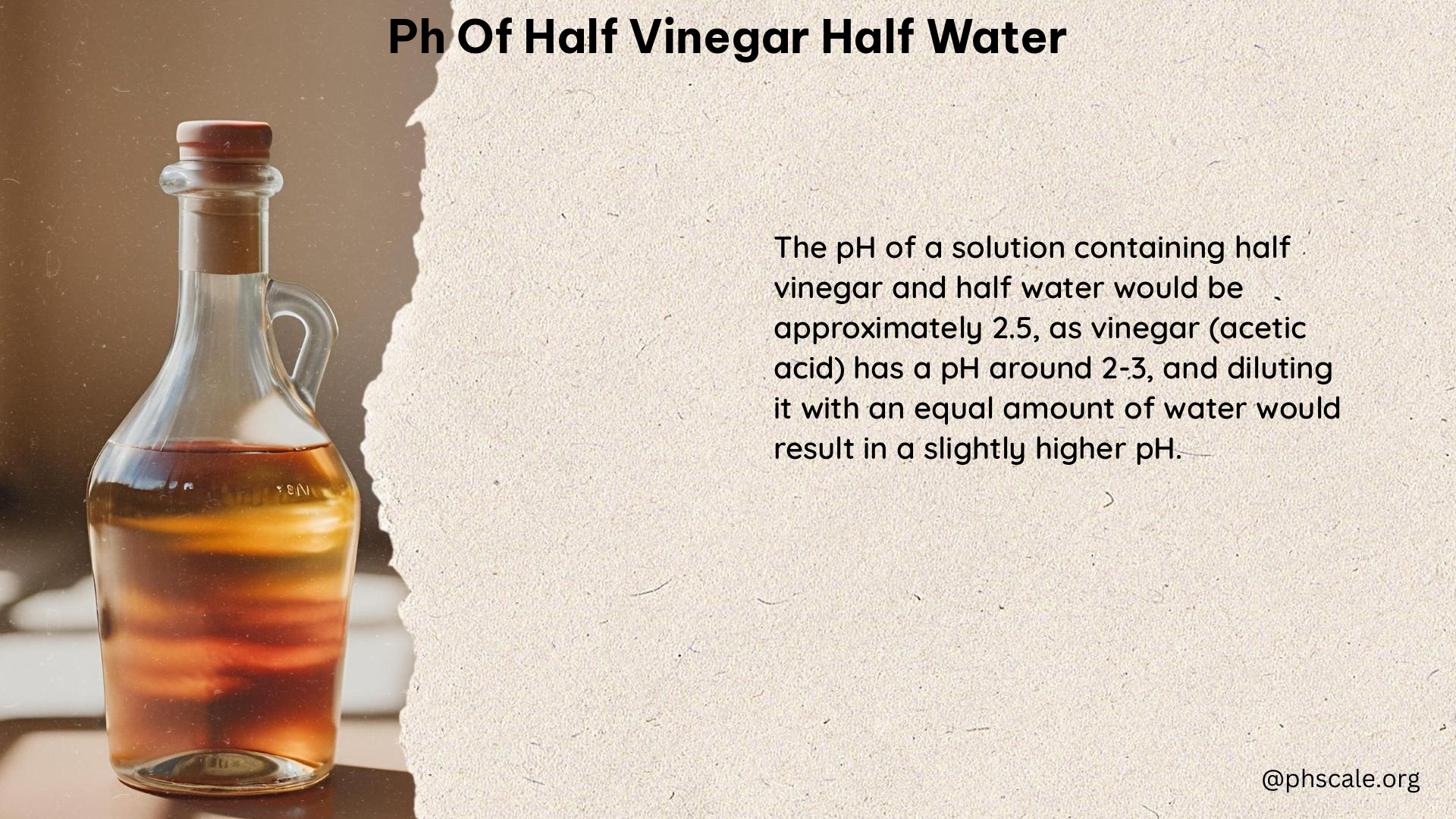The pH value of a mixture of half vinegar and half water is approximately 2.9. Vinegar is an acidic substance with a typical pH range of 2-3, while pure water has a neutral pH of 7. When vinegar is mixed with water, the pH value increases due to dilution, but it remains on the acidic side of the pH scale.
Understanding the pH of Vinegar-Water Mixtures
To calculate the pH value of a vinegar-water mixture, we can use the formula:
pH = pKa + log([A-]/[HA])
Where:
– pKa is the acid dissociation constant for acetic acid (approximately 4.75)
– [A-] is the concentration of acetate ions
– [HA] is the concentration of acetic acid
In the case of a 1:1 mixture of 5% vinegar and water, the concentration of acetic acid is approximately 2.5% (or 0.025 by weight). Assuming the density of the mixture is close to that of water (1 g/mL), the molar concentration of acetic acid is:
[HA] = 0.025 kg/L / (60.05 g/mol) / 1 L = 0.416 M
The concentration of acetate ions can be calculated using the dissociation equilibrium:
HA ↔ H+ + A-
With an equilibrium constant of:
Ka = [H+][A-] / [HA] = 10^-4.75
Rearranging for [A-], we get:
[A-] = Ka[HA] / [H+]
Assuming the pH is close to the initial pH of the vinegar (around 2.5), we can approximate [H+] as:
[H+] = 10^-2.5 M
Substituting the values for Ka, [HA], and [H+] into the equation for [A-], we get:
[A-] = (10^-4.75)(0.416 M) / (10^-2.5 M) = 0.0028 M
Finally, we can calculate the pH using the formula for pH:
pH = pKa + log([A-]/[HA])
pH = 4.75 + log(0.0028 M / 0.416 M)
pH ≈ 2.9
Contaminants and Chemicals in Vinegar-Water Mixtures

The main component of concern in a vinegar-water mixture is acetic acid, which can cause skin and eye irritation in high concentrations. However, in a 1:1 mixture with water, the concentration of acetic acid is significantly diluted and is unlikely to pose a health risk.
If you’re concerned about contaminants in your vinegar, it’s a good idea to check the label for any added ingredients or preservatives. Some vinegars may contain added sulfites or other chemicals to extend their shelf life. If you’re using vinegar for cleaning or disinfecting, it’s important to dilute it properly to avoid damaging surfaces or causing irritation.
Balancing the pH of Vinegar-Water Mixtures
To balance the pH of a vinegar-water mixture, you can add baking soda or another alkaline substance. However, keep in mind that adding alkaline substances to an acidic mixture can cause a chemical reaction that releases heat and gas. It’s important to add the alkaline substance slowly and carefully, stirring well to ensure that the mixture is well-mixed and doesn’t overflow.
Conclusion
In summary, the pH of a 1:1 mixture of 5% vinegar and water is approximately 2.9. This acidic pH is due to the presence of acetic acid in the vinegar, which can be calculated using the formula for pH. While acetic acid can be a skin and eye irritant in high concentrations, the diluted mixture is unlikely to pose a health risk. If you’re concerned about contaminants or want to balance the pH, it’s important to follow proper safety precautions and dilution methods.
